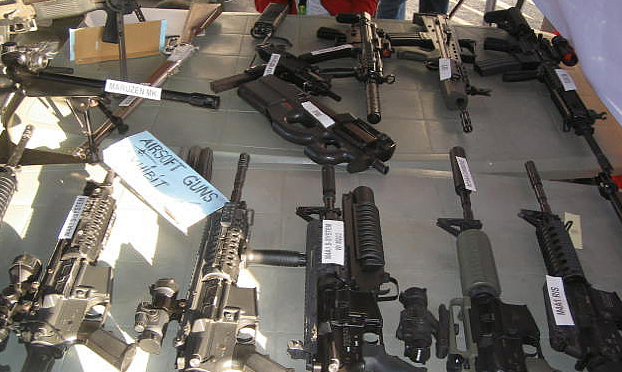A substantial cache of weapons has been removed from an Italian arms depot – and the Italian government won’t say where they are. Citing state secrecy orders, Ministry of Defense officials in Rome are refusing to respond to investigators’ requests for clarifications on the whereabouts and method of transport of these arms.
The Guardian reported yesterday that
The weapons were from a consignment that included 30,000 Kalashnikov AK-47 automatic rifles, 32m rounds of ammunition, 5,000 Katyusha rockets, 400 Fagot wire-guided anti-tank missiles and some 11,000 other anti-tank weapons.
They were transferred from a store on the island of Santo Stefano, off the north coast of Sardinia, and transported to the mainland where they were loaded onto army trucks, a source familiar with the operation told the Guardian. But what happened to them after that is a mystery – and now a secret.
The arms were said to have been moved about a month after Silvio Berlusconi radically shifted his stance on Libya. Firmly allied to Colonel Muammar Gaddafi until the outbreak of hostilities, he was initially reluctant to do more than provide base facilities for France and Britain.
But on 26 April, after a telephone conversation with Barack Obama, he announced that Italian planes would join the air strikes on Libya in an attempt to break the deadlock on the ground.
While inconclusive, if Italy did supply these arms to the Libyan rebels in late May, it would join France in the legal gray area between civilian protection and the arms embargo. The US and others have argued that UN Resolution 1973, which authorized international action to protect civilians in mid-March, permits arms transfers to the rebels. Other governments have rejected that interpretation and condemned France’s air drop of small arms to the rebels as directly contravening Resolution 1970, which enacted an arms embargo against Libya in February. While it’s unlikely there will be any short-term ramifications for France or Italy, it raises questions about Italy’s motives and its reliability as a partner in the Libya operations. It shouldn’t be too much to ask for the MoD to confirm or deny whether these arms are now in Libyan hands.
The story of how these weapons came to Italy is also noteworthy. Initially seized in 1994 by Italian warships acting on British intelligence, the Russian-made arms were captured on their way to Croatia during the Balkan wars. While eight people were eventually brought to trial on arms trafficking charges, all were acquitted. An Italian judge ruled that the weapons were to be destroyed; instead, the Italian government kept them in storage.
The history of these weapons and their possible transfer to Libya highlight the need for an Arms Trade Treaty (ATT) as well as one of the primary challenges negotiators must overcome. Ideally, an ATT would prevent the transfers of arms to states or conflicts with high potential for human rights violations and would impose penalties on states that violate it. The details are still being hashed out at the UN, but arms are fungible and, especially in the case of the AK-47, have a longer lifespan than most modern conflicts. There is a strong incentive for states to keep and potentially resell weapons; an ATT with teeth could provide a disincentive and, should states violate their treaty obligations, impose penalties. However, negotiators must first solve the problem of enforcement and verification. Without a way to verify whether states are meeting their obligations, the ATT will be little more than a nice idea.
